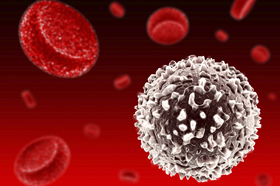Promising Results Reported From Preclinical Evaluation of 177Lu-rhPSMA-10.1 Drug Combinations
 Blue Earth Therapeutics, a Bracco company, announced results from a series of preclinical analyses designed to identify synergistic combinations of known anticancer drugs with177Lu-rhPSMA-10.1 radioligand therapy, and from a preclinical efficacy analysis of the lead novel drug combination for the treatment of prostate cancer.
Blue Earth Therapeutics, a Bracco company, announced results from a series of preclinical analyses designed to identify synergistic combinations of known anticancer drugs with177Lu-rhPSMA-10.1 radioligand therapy, and from a preclinical efficacy analysis of the lead novel drug combination for the treatment of prostate cancer.
Results from a systematic in vitro screen identified MEK inhibitor cobimetinib as a lead candidate with potential for synergistic combination with177Lu-rhPSMA-10.1, and the preclinical efficacy analysis showed enhanced therapeutic effect of this drug combination when compared to the untreated control and to the single agents alone. The data were presented in a poster presentation at the American Association for Cancer Research (AACR) Annual Meeting 2024.177Lu-rhPSMA-10.1, an investigational radiohybrid (rh) Prostate-Specific Membrane Antigen-targeted therapeutic radiopharmaceutical, is the lead candidate in Blue Earth Therapeutics’ oncology development program of next generation therapeutic radiopharmaceuticals.
“Radioligand therapy targeting PSMA has been shown to be an effective therapy in men with prostate cancer, and we are pleased to share these promising preclinical results from our study of177Lu-rhPSMA-10.1 drug combinations with the scientific community at the prestigious AACR Annual Meeting 2024,” said David E. Gauden, DPhil, Chief Executive Officer of Blue Earth Therapeutics. “Combination approaches are of increasing interest among the medical community, as we know tumors are heterogeneous and some prostate cancer cells do not express PSMA. Importantly, these combinations need to avoid overlapping toxicity. Results from this preclinical study presented at AACR demonstrated a synergistic therapeutic effect between177Lu-rhPSMA-10.1 and an MEK inhibitor. This may be due to inhibition of the MEK-MAPK pathway during DNA damage response, resulting in radiosensitization of cancer cells to177Lu-rhPSMA-10.1. Our ongoing Phase 1/2 clinical trial (NCT05413850) is evaluating177Lu-rhPSMA-10.1 radioligand therapy as a monotherapy in treating men with metastatic castrate resistant prostate cancer, and we may look to evaluate this combination in the clinic in the future.”
More than 150 FDA-approved anticancer drugs were screened in a clonogenic survival assay of 22Rv1 cells using the test drug alone, at a range of concentrations <20 µM to determine the IC50. The results were then compared to incubations of the drug plus 15 MBq/mL177Lu-rhPSMA-10.1 (2-hour incubation) after 10 days.
Five lead candidates were then selected for a focused screen where the impact of177Lu-rhPSMA-10.1 (0–25 MBq/mL) on the drug IC50 was determined. A synergy score was determined using the zero interaction potency (ZIP) reference model and the multi-dimensional synergy of combinations (MuSyc) platform.
Therapeutic efficacy of the lead combination,177Lu-rhPSMA-10.1 (single 30 MBq iv dose) plus cobimetinib (0.25 mg orally per day for 21 days), was then evaluated in 22Rv1 prostate tumor xenograft models and compared to the single agents alone (n = 8 per group, plus untreated controls). Tumor volume was measured 2 times per week for 69 days. Two-way ANOVA and Tukey’s multiple comparisons test (data analyzed until n = 3 remained per group) and Kaplan-Meier Log-rank survival analyses were performed.
The in vitro screen identified the MEK inhibitor cobimetinib as a lead candidate for synergistic combination with177Lu-rhPSMA-10.1 across a wide concentration range, with a ZIP synergy score of 13.25% (95% CI ± 2.17) and promising results on MuSyc analysis. The177Lu-rhPSMA-10.1 plus cobimetinib MEK inhibitor combination significantly suppressed tumor growth in vivo versus untreated controls (from day 13–30; p<0.01) and177Lu-rhPSMA-10.1 alone (from day 17–30; p<0.001). The median survival in the combination group (49 days) was significantly longer versus the untreated group (23 days; p=0.001) and the group treated with177Lu-rhPSMA-10.1 alone (36 days; p=0.002).